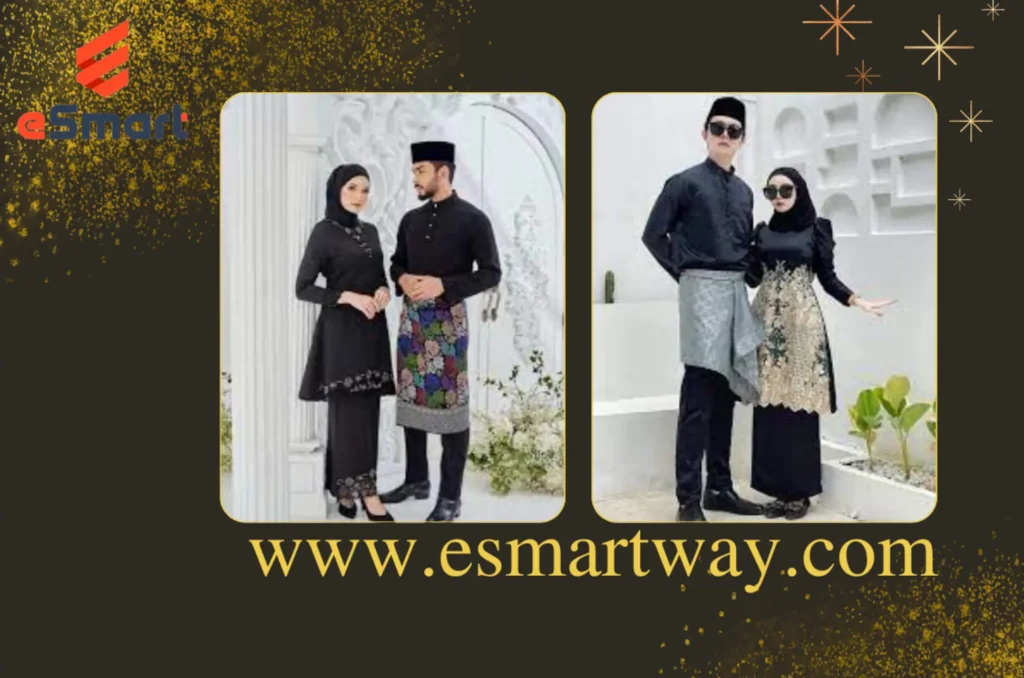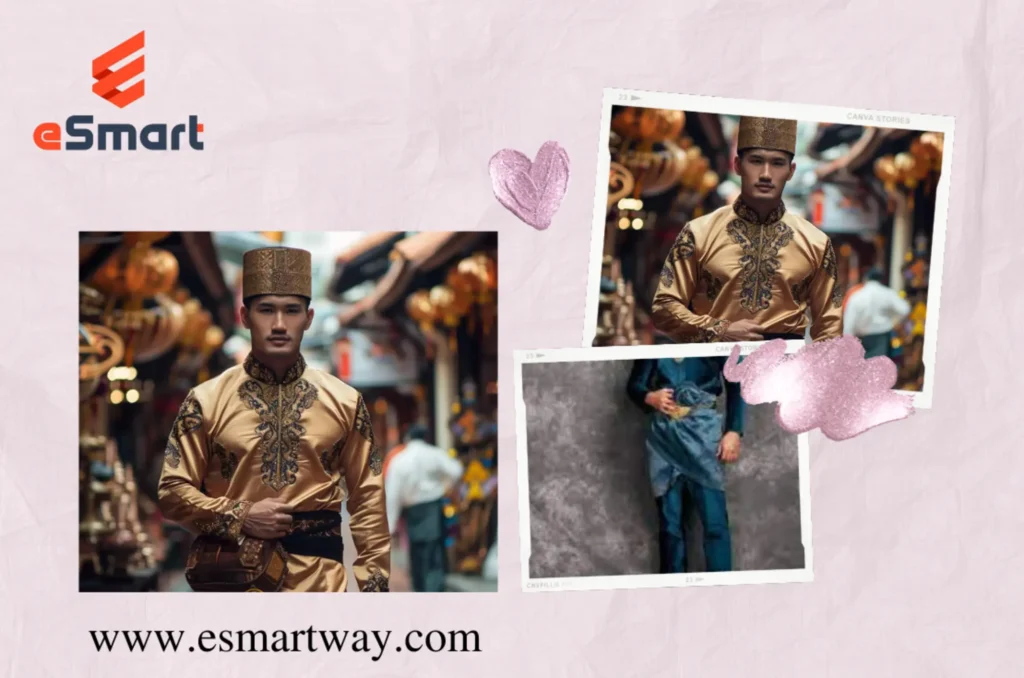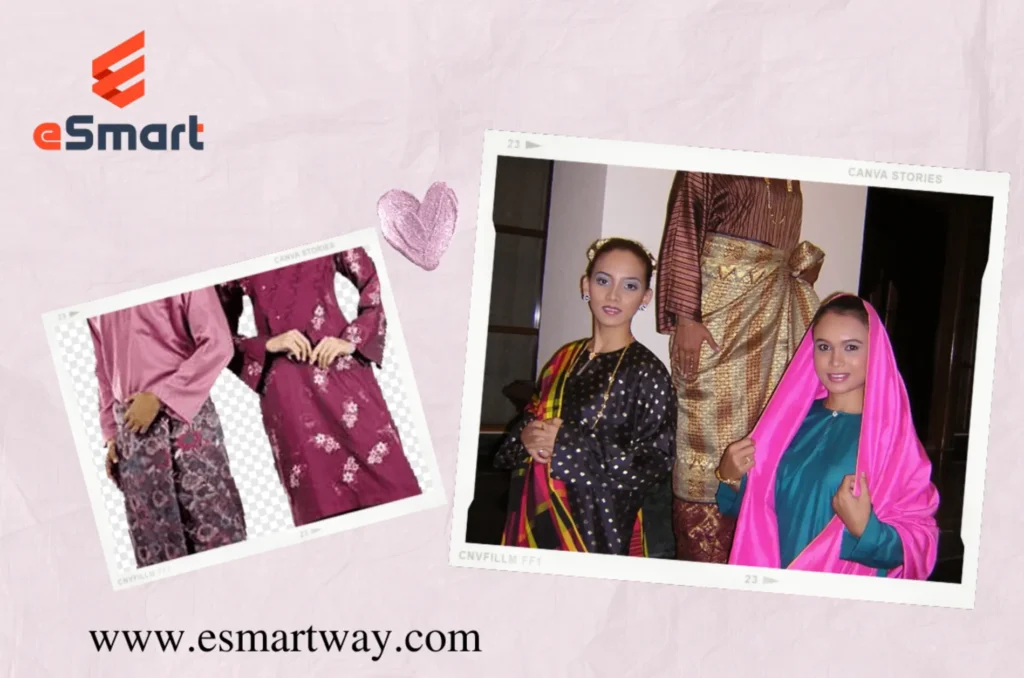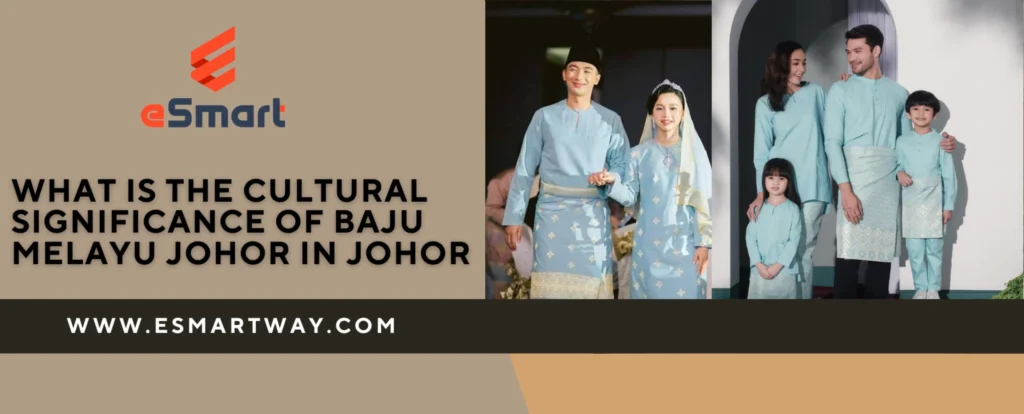The Baju Melayu Johor symbolizes Johorean identity and cultural heritage. It represents traditional Malay attire and is worn during significant events.
The Baju Melayu Johor holds deep cultural significance in Johor. This traditional Malay attire is a symbol of Johorean identity and pride. It is commonly worn during festivals, weddings, and official ceremonies. Its unique design, featuring a long-sleeved shirt and trousers, distinguishes it from other regional variations.
The outfit’s traditional elements, like the samping and songkok, add to its cultural richness. The Baju Melayu Johor not only showcases the region’s history but also fosters a sense of unity among the Johorean people. Wearing this attire is a way to honor and preserve their rich cultural heritage.
Cultural Roots
The Baju Melayu Johor holds a special place in Johor’s culture. This traditional attire is more than just clothing. It reflects the rich history and diverse ethnic influences of the region. The Cultural Roots of Baju Melayu Johor reveal much about Johor’s identity and heritage.
Historical Background
The history of Baju Melayu Johor dates back several centuries. It has evolved over time, influenced by various factors. Originally, it was worn by the Malay nobility and common folk alike. The design of Baju Melayu Johor is unique. It features a loose-fitting tunic and trousers, making it comfortable in the tropical climate.
During the Sultanate of Johor, the Baju Melayu became a symbol of status. Sultans and nobles often adorned their attire with intricate embroidery. The fabric choices also varied. Silk was common among the wealthy, while cotton was used by the masses. This distinction highlighted social classes in Johor.
Here is a comparison of the traditional Baju Melayu Johor fabrics:
|
Fabric Type |
Usage |
|
Silk |
Nobility |
|
Cotton |
Common Folk |
Ethnic Influences
The Baju Melayu Johor is a blend of various ethnic influences. Malay culture is the primary influence. However, it also incorporates elements from Chinese and Indian cultures. This mix reflects the multicultural society of Johor.
Malay culture contributed the basic design of the tunic and trousers. The Chinese influence is evident in the use of silk fabrics and button styles. Meanwhile, Indian culture introduced intricate embroidery and bright colors to the attire.
These influences combined to create a unique style. The Baju Melayu Johor thus stands as a symbol of unity and diversity. It represents the harmonious blending of different cultures in Johor.

Design Elements
Baju Melayu Johor is a traditional attire worn by men in Johor. This clothing holds deep cultural significance. It symbolizes the rich heritage and identity of the Johorean people. The design elements of Baju Melayu Johor reflect the traditions and customs of the region. Understanding the fabric choices and color symbolism can help appreciate its cultural value.
Fabric Choices
The fabric used for Baju Melayu Johor is carefully selected. Silk and cotton are the most common materials. Silk is often chosen for its smooth texture and luxurious feel. Cotton, on the other hand, is preferred for comfort and breathability. These fabrics are not only functional but also add to the elegance of the attire.
There are different types of silk and cotton used:
- Songket: A type of silk with intricate patterns.
- Kain Pelikat: A cotton fabric with checkered designs.
- Tenun: Handwoven fabric with unique textures.
Each fabric choice reflects the craftsmanship and artistry of the makers. They take pride in creating garments that represent their culture. The choice of fabric also affects the overall look and feel of Baju Melayu Johor.
Color Symbolism
Colors play a significant role in Baju Melayu Johor. Different colors carry different meanings. Black is often worn for formal events. It symbolizes dignity and respect. White is chosen for its purity and simplicity. It is common during religious ceremonies.
Other colors include:
- Red: Represents bravery and strength.
- Green: Symbolizes peace and prosperity.
- Yellow: Denotes royalty and honor.
These colors are not just for aesthetics. They convey the values and beliefs of the Johorean people. Wearing a specific color can express one’s intentions and emotions. It is a way of communicating without words.
Traditional Occasions
Baju Melayu Johor is a traditional Malay costume. This attire carries deep cultural significance in Johor. It is worn during various traditional occasions. The outfit symbolizes the rich heritage of the Johor people.
Festivals And Celebrations
Baju Melayu Johor is prominently worn during festivals and celebrations. Hari Raya Aidilfitri and Hari Raya Aidiladha are the main festivals. During these times, men dress in Baju Melayu Johor to honor their traditions. The attire usually includes a long-sleeved shirt and trousers. A matching ‘sampin’ is wrapped around the waist. The attire comes in various colors. Bright colors are often chosen to represent joy and festivity.
During these festivals, families gather to celebrate. They wear their best Baju Melayu Johor. This shows respect for their culture. Children also take part in these traditions. They learn about their heritage through these celebrations. Baju Melayu Johor is not just clothing. It is a symbol of identity and pride.
Here are some key elements of the attire:
- Baju: The long-sleeved shirt
- Seluar: The trousers
- Sampin: A cloth wrapped around the waist
- Songkok: A traditional hat
Weddings And Ceremonies
Baju Melayu Johor is a staple in weddings and ceremonies. The groom often wears a more elaborate version. This version is called Baju Melayu Teluk Belanga. It features intricate embroidery and luxurious fabric. The attire signifies respect and elegance. It is important for these special occasions.
During a wedding, the groom’s Baju Melayu Johor is usually paired with a ‘songkok’. This adds to the traditional look. The bride may also wear a complementary outfit. Together, they represent the unity of their culture. The attire creates a sense of harmony and tradition.
Here are the main components for weddings:
- Elaborate Baju: With embroidery
- Luxurious Seluar: Made from fine fabric
- Elegant Sampin: Often with gold threads
- Songkok: A must-have for the groom
Baju Melayu Johor in weddings is not just about appearance. It is about preserving the cultural values. The attire plays a crucial role in traditional ceremonies. It helps keep the heritage alive for future generations.
Modern Adaptations
The Baju Melayu Johor holds a special place in Johor’s culture. This traditional attire is a symbol of heritage and identity. It is worn during important events and ceremonies. Modern adaptations have made this attire even more relevant today. These changes reflect the evolving fashion landscape while preserving its cultural essence.
Contemporary Fashion
The Baju Melayu Johor has found its way into contemporary fashion. Modern designers are creating new styles while keeping the traditional look. This makes the attire more appealing to the younger generation. People now wear it not just during festivals but also in daily life.
Some key features include:
- Slimmer cuts and tailored fits
- Use of modern fabrics like cotton blends
- Incorporation of bold colors and patterns
These adaptations have made the attire more versatile. It can be worn in both formal and casual settings. This has helped to keep the tradition alive in a modern world.
Influence Of Global Trends
Global trends have also influenced the Baju Melayu Johor. Designers are looking at international fashion for inspiration. They blend these ideas with traditional elements. This results in a unique fusion that appeals to a wider audience.
Key influences include:
- Minimalist designs from Western fashion
- Bold prints inspired by African patterns
- Comfortable fabrics used in global casual wear
This blending of styles has made the attire more global. It is now recognized and appreciated beyond Johor. This helps to promote Johor’s culture on an international stage.
Regional Variations
The Baju Melayu Johor is a traditional attire that holds significant cultural value in the state of Johor, Malaysia. This traditional garment is not only a symbol of ethnic identity but also a representation of the rich cultural heritage of the Johor community. The Baju Melayu Johor stands out due to its unique design and is often worn during special occasions such as weddings, festivals, and religious ceremonies. The cultural significance of Baju Melayu Johor is deeply rooted in the history and traditions of the people of Johor. Regional variations add to the charm and uniqueness of this attire, showcasing the diversity within the community.
Differences In Styles
The Baju Melayu Johor comes in various styles, each with its own distinct features. One popular style is the Teluk Belanga, which is known for its simple, round neckline. This style is often preferred for its comfort and ease of wear. Another style is the Cekak Musang, which features a stand-up collar with buttons. This style is considered more formal and is often worn during significant events.
Here are some key differences between the Teluk Belanga and Cekak Musang styles:
- Neckline: Teluk Belanga has a round neckline, while Cekak Musang has a stand-up collar.
- Formality: Teluk Belanga is more casual, whereas Cekak Musang is more formal.
- Occasions: Teluk Belanga is worn for casual events, and Cekak Musang is worn for formal events.
Both styles are cherished for their unique characteristics and are an integral part of Johor’s cultural heritage. The choice of style often depends on the occasion and personal preference, allowing individuals to express their cultural identity in various ways.
Local Significance
The Baju Melayu Johor holds immense local significance in the state of Johor. It is more than just a piece of clothing; it is a symbol of pride and identity for the Johor people. Wearing this traditional attire during important events showcases respect for cultural traditions and heritage.
Some of the local significances include:
- Cultural Identity: It represents the unique cultural identity of the Johor community.
- Respect for Tradition: Wearing it during festivals and ceremonies shows respect for tradition.
- Community Bonding: It fosters a sense of unity and belonging among the people of Johor.
The Baju Melayu Johor also plays a vital role in preserving the cultural heritage of Johor. It is often passed down through generations, keeping the traditions alive. The attire is also a source of pride for the younger generation, who wear it to connect with their roots and heritage.
In conclusion, the Baju Melayu Johor is a significant cultural symbol in Johor. It reflects the rich history and traditions of the region. The attire is cherished by the people for its unique styles and local significance.

Cultural Identity
The Baju Melayu Johor is more than just a piece of clothing. It represents the cultural identity of the people of Johor. This traditional attire has deep roots in the history of Johor. It is worn by many during special occasions. The Baju Melayu Johor holds a special place in the hearts of the Johoreans. It is a symbol of their rich heritage and community pride.
Symbol Of Heritage
The Baju Melayu Johor has been a part of the culture for centuries. It is a traditional attire that signifies the rich heritage of Johor. Many people wear it during festivals and important ceremonies. The outfit consists of a long-sleeved shirt and pants. It is usually paired with a songkok, a traditional hat.
The design of the Baju Melayu Johor is unique. It reflects the traditional craftsmanship of the local people. The materials used are often of high quality. This ensures that the attire is both beautiful and durable.
- Long-sleeved shirt – Symbolizes modesty and respect.
- Long pants – Represents tradition and continuity.
- Songkok – A traditional hat that completes the attire.
Wearing the Baju Melayu Johor is a way to honor the ancestors. It keeps the traditions alive and passes them down to the next generation.
Community Pride
The Baju Melayu Johor also instills a sense of pride among the people. It is a symbol of unity and identity. During festivals, you can see many people wearing this attire. This shows their love and respect for their culture.
Community events are often filled with people in Baju Melayu Johor. This creates a sense of togetherness. It strengthens the bonds within the community.
The attire is also a source of pride when representing Johor to the outside world. It showcases the unique culture and heritage of the state. It is a way to share the rich traditions of Johor with others.
- Festivals – Many people wear it during festive seasons.
- Community events – Creates a sense of togetherness.
- Representation – Showcases Johor’s culture to others.
The Baju Melayu Johor is not just a piece of clothing. It is a symbol of pride and cultural identity for the people of Johor.
Artisan Craftsmanship
The Baju Melayu Johor holds a special place in the culture of Johor. This traditional attire is more than just clothing. It symbolizes history, heritage, and identity. Crafted with care, the Baju Melayu Johor showcases the skill of local artisans. The delicate work involved in making this attire reflects the beauty and artistry of Johor’s culture. Artisan craftsmanship plays a vital role in preserving this cultural heritage.
Handmade Techniques
Making the Baju Melayu Johor involves intricate handmade techniques. Artisans spend hours perfecting each piece. The process begins with selecting the finest fabric. Cotton and silk are popular choices. The fabric is then measured and cut with precision. Every stitch is done by hand, ensuring high quality.
Key steps in the handmade process include:
- Measuring and Cutting: The fabric is measured and cut to exact dimensions.
- Hand Stitching: Every seam is hand-stitched for durability and finish.
- Embroidery: Traditional patterns are embroidered to add beauty.
Artisans also use special tools like:
- Needles and Threads: Different sizes for various stitches.
- Embroidery Hoops: To keep the fabric taut during stitching.
- Scissors: Sharp and precise for clean cuts.
Each piece of Baju Melayu Johor is unique. The handmade techniques ensure that every attire is a work of art. This dedication to craftsmanship keeps the tradition alive and thriving.
Skill Preservation
The art of making Baju Melayu Johor is passed down through generations. This skill preservation is crucial for maintaining the cultural heritage. Young artisans learn from their elders. They practice the techniques until they master them.
Efforts to preserve these skills include:
- Workshops: Conducted by master artisans to teach young talents.
- Apprenticeships: Young artisans work with experienced craftsmen.
- Cultural Programs: Events that promote traditional crafts and skills.
Schools and community centers also play a role. They offer classes and courses on traditional crafts. This ensures that the skills are not lost over time. Supporting artisans is also important. Buying handmade Baju Melayu Johor helps sustain their livelihood. This support encourages young people to continue the tradition.
Preserving the skills involved in making Baju Melayu Johor is vital. It keeps the culture of Johor rich and vibrant. Each piece of attire tells a story of dedication and heritage. This makes the Baju Melayu Johor a treasured symbol of Johor’s culture.
Social Implications
The Baju Melayu Johor is not just a piece of clothing. It holds deep cultural significance in Johor. This traditional attire reflects the rich heritage and identity of the Johor people. The Baju Melayu Johor plays a crucial role in social interactions and ceremonial events. Understanding its cultural significance can provide insights into the values and traditions of the Johor community.
Gender Roles
The Baju Melayu Johor highlights distinct gender roles in Johor society. Men typically wear the Baju Melayu with a samping and songkok. This attire symbolizes masculinity and respect. Women, on the other hand, often wear the Baju Kurung, which complements the Baju Melayu. This traditional dress reflects femininity and grace.
Here are some key differences:
- Men’s Baju Melayu: Loose-fitting shirt, long pants, samping, and songkok.
- Women’s Baju Kurung: Tunic top, long skirt, and often a shawl or hijab.
These gender-specific attires are worn during festivals, weddings, and official ceremonies. They help in maintaining cultural norms and values. Wearing these clothes signifies respect for tradition and unity in the community. Thus, Baju Melayu Johor plays a vital role in defining gender identities and roles in Johor society.
Generational Perspectives
Different generations in Johor view the Baju Melayu Johor differently. For the elder generation, it is a symbol of heritage and pride. They cherish the tradition and customs associated with it. Wearing the Baju Melayu brings back memories of their youth and celebrations.
The younger generation sees it in a more modern light. They often blend traditional elements with contemporary fashion. This creates a unique style that resonates with both tradition and modernity. Young people wear the Baju Melayu Johor during festive seasons and cultural events. They also take pride in showcasing their heritage.
|
Generation |
Perspective |
|
Elder Generation |
Symbol of heritage and pride |
|
Younger Generation |
Blend of tradition and modernity |
Both generations value the Baju Melayu Johor. It continues to be an important part of Johor’s cultural identity. The attire bridges the gap between the past and the present. It also helps in passing down values and traditions from one generation to the next.
Global Recognition
Baju Melayu Johor is a traditional garment worn by men in Johor, Malaysia. It is not just clothing but a symbol of cultural pride and heritage. The outfit consists of a long-sleeved shirt with a high collar and matching pants. It is often worn with a samping, a piece of cloth wrapped around the waist, and a songkok, a traditional cap. The unique style and design of Baju Melayu Johor make it a significant cultural artifact.
Cultural Exports
Baju Melayu Johor has been exported to different parts of the world. This traditional attire has gained international recognition due to its unique design. Many people wear it during cultural events and celebrations abroad. This helps in spreading the rich culture of Johor globally.
Here are some reasons why Baju Melayu Johor is a significant cultural export:
- Symbol of Tradition: It represents the heritage of the Malay community.
- Unique Design: Its unique style sets it apart from other traditional attires.
- Cultural Awareness: Wearing it abroad promotes Johor’s culture.
Many fashion shows and cultural exhibitions showcase Baju Melayu Johor. This helps in gaining more attention and appreciation. The garment is not just a piece of clothing but a cultural ambassador. It connects people with Johor’s rich history and traditions.
Tourism Impact
Baju Melayu Johor plays a significant role in boosting tourism in Johor. Tourists visiting Johor often purchase this traditional attire as a souvenir. It helps in keeping the tradition alive and supports local artisans.
Here are some ways Baju Melayu Johor impacts tourism:
- Local Markets: Tourists visit local markets to buy traditional attire.
- Cultural Festivals: Baju Melayu Johor is showcased in cultural festivals attracting tourists.
- Heritage Tours: Tourists enjoy heritage tours that explain the significance of the attire.
Moreover, many hotels and resorts in Johor offer traditional attire for guests to wear. This enhances their cultural experience. It also encourages tourists to learn more about Johor’s rich traditions. Baju Melayu Johor thus serves as a bridge between the past and present, attracting people from all over the world.

Conclusion
Baju Melayu Johor holds deep cultural significance in Johor. Its unique design and traditional elements represent Johorean identity. Wearing it during festivals and ceremonies preserves the region’s rich heritage. Embracing Baju Melayu Johor connects people to their roots, fostering pride and unity among the Johorean community.


